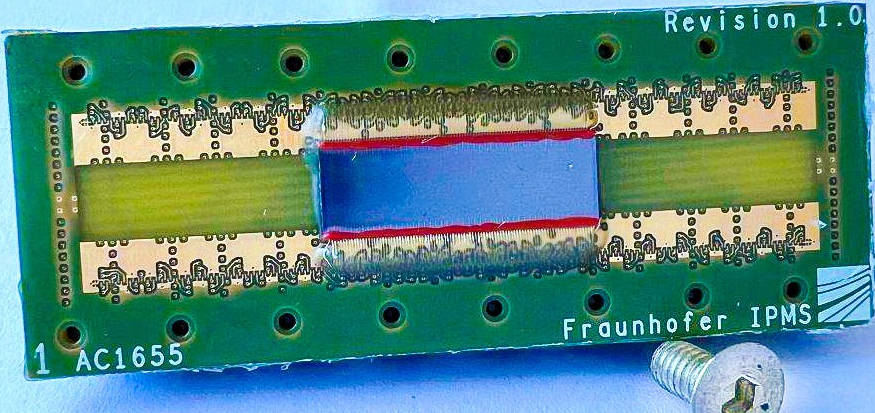
“They are considered to be the next generation of medical ultrasound sensors,” according to Fraunhofer. “The low-cost mass production of CMUTs makes them widely available. Their advantages, such as miniaturisation with a high number of channels, high bandwidth and sensitivity, open up the possibility of developing a completely new diagnostic system.”
The transducer development is part of an €9.5m European Horizon Europe Innovation Action programme to develop the cuff called ThrombUS+, which has 18 members across Greece, Lithuania, France, Germany, USA, Italy, Finland and Spain, ending in mid-2027.
“There are many challenges in developing a portable solution for the diagnosis and prevention of thrombosis,” said ThrombUS+ co-ordinator Professor Eleni Kaldoudi, coordinator of the project and a medical scientist at the Athena Research Center in Greece. “We are addressing these challenges not only from a technological perspective. One of the strengths of the consortium lies in the application of a compliance-by-design approach, which integrates legal, regulatory and safety requirements for complex medical devices as early as possible in the development process, thus shortening the innovation’s path to the patient.”
Fraunhofer IPMS has teamed up with French/US transducer maker Vermon to complete the CMUT-based sensor.
CMUT?
CMUTs have a thin membrane suspended over a substrate to form a wide flat cavity. The membrane is one electrode of the capacitor and the substrate the other. Changing the potential across this capacitance flexes the membrane, and this is exploited to radiate ultrasound.
DVT?
In about half of DVT patients, according to Fraunhofer IPMS, the blood clot breaks away from the vein wall and travels to the lungs, where it can cause a pulmonary embolism. Approximately 25% of people who suffer a pulmonary embolism die as a result. It is third cause of cardiovascular death worldwide after stroke and heart attack. In up to two-thirds of all thrombosis cases, people have no initial symptoms.







